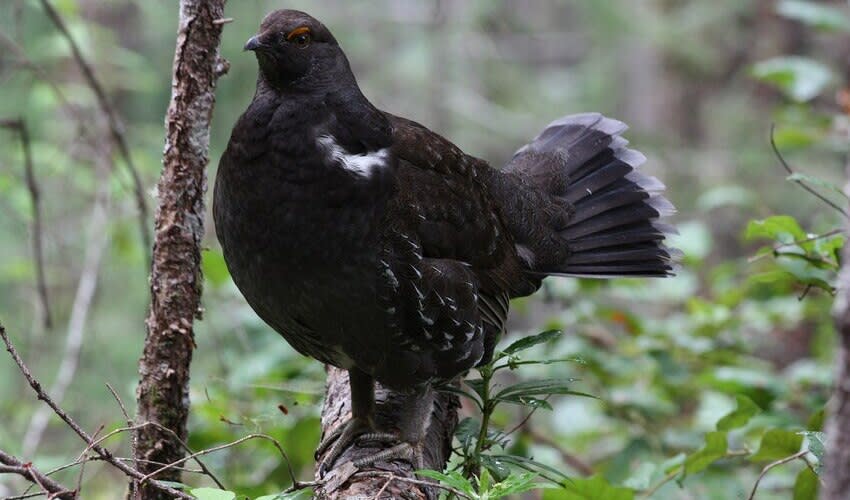Dendragapus – Dusky & Sooty grouse
Commonly known as blue grouse, are members of this genus inhabiting conifers and mixed forests
Dendragapus comprises two large grouse species, the Dusky grouse and the Sooty grouse, that are indigenous to the mountainous regions of North America. These birds have adapted to life in varied mountain ecosystems, ranging from the coniferous forests to the alpine meadows of these vast terrains.
Morphological characteristics, behavioral patterns, and distinctive vocalizations have led to the classification of the Dusky and Sooty grouses as separate species within the genus. Both species boast a long, square tail that is predominantly grey towards the end, a feature that becomes especially prominent during their mating displays. In the spring, males exhibit striking throat air sacs—dark purple in the Dusky Grouse and yellow in the Sooty Grouse—which they inflate during courtship to produce a unique and resonant hooting sound that echoes through the forest. This display not only attracts females but also establishes the male’s territory.
Females of both species are mottled with dark brownish plumage, which provides them with excellent camouflage on the forest floor, an essential adaptation for nesting and protecting their young. White markings on their underparts further aid in concealing them amidst the dappled light of their wooded habitats.
Nesting habits of Dendragapus species are characterized by their preference for concealing their nests on the ground, often hidden under a log or within the shelter of a shrub. This strategic selection of nesting sites helps protect their eggs and chicks from predators.
Unlike many other bird species, Dendragapus grouses do not migrate but are permanent residents of their habitats. Intriguingly, they exhibit a seemingly paradoxical behavior of moving to higher altitudes during the winter months. This altitudinal migration is not fully understood, but it may relate to the availability of food sources, such as conifer needles and buds, which are a crucial part of their winter diet. Additionally, the snow at higher elevations may actually provide insulation and concealment from predators.
Species in this genus
Dusky grouse
The third largest grouse in North America is known for their shortest bird migration and resides permanently in an area they hatch


